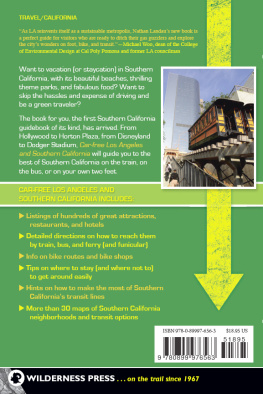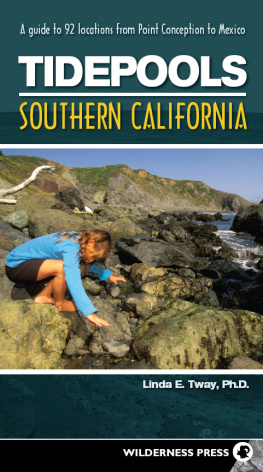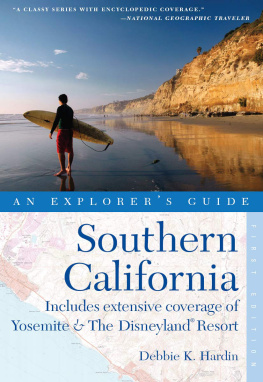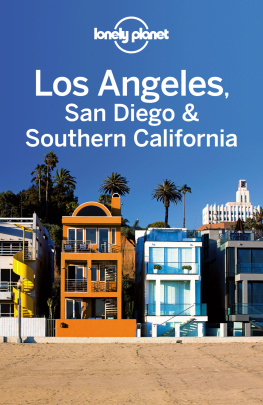Noelle Sullivan has written essays, poems, stories, and several small books of history. She holds a masters degree in the history of the American West from the University of New Mexico. Her work includes contributions to The New Montana Story and M-e Ecci Aashi Awadi: The Knife River Indian Villages. She lives in Montana with her husband and three daughters, and writes for the blog Montana Gael.
My thanks go to anyone who reads this book, curious to learn more about California; to my husband, Tim Daley, and our lovely daughters; to my friends Lee, Larkin, Lila, Greg, Mike, Liz, Pableaux, Kate, Julie, and Jen; my mother Patricia Sullivan; editor Allen Jones; and to the many people behind the scenes who helped make this little book more than a collection of notes.

- California is the third largest state, bigger than 85 of the worlds smallest nations put together. It measures 158,693 square miles, or 101,563,520 acres.
- California was the name of a fictional island in Las Sergas de Esplandan, a romance by the Spanish writer Garca Ordez de Montalvo, published in 1510. The name was given to what is now Baja California by the Spanish explorers Hernando Cortes and Fortn Ximenez early in the sixteenth century.
- Californias shoreline is so long that it would reach from Boston, Massachusetts, to Charleston, South Carolina.
- In 1962, California became the most populous state in the union, with more than 22 million residents. Today it is home to more than 36,457,000 people, with more than 217 people per square mile.
- The Golden State was given its nickname because of the discovery of gold in 1848 at Sutters Mill near Sacramento, todays state capital. But the name also reflects the California state flower, the golden poppy.
- Southern California deserts support seven hundred species of flowering plants, including blue lupines, yellow desert sunflowers, desert marigolds, sand verbena, and evening primroses.
- I Love You, California, by F. B. Silverwood and A. F. Fran-kenstein, is the official state song.
- Californias state bird, the California valley quail, lives in dry scrub and canyons. It cannot be found in the thick groves of California redwood, which is the state tree.
- Its drivers commute an average of 28 minutes to work or school.
- Californians use more than 35,100,000,000 gallons of fresh water per day.
- Three out of four days in California are sunny.
- Californias lowest temperature on record was -45 degrees F on January 20, 1937 at Boca, elevation 5,532 feet. The temperature at Greenland Ranch, 178 feet below sea level, reached 134 degrees F on July 10, 1913, also a record.
- California is one of the most urban states in the country. Only New Jersey, Rhode Island, Connecticut, Massachusetts, and Maryland have more metropolitan areas per capita.
- The average Californian is 32 years old, is white or Latino, female, and lives in the Los Angeles Basin.
- Any U.S. citizen who lives in California and is 18 years old is eligible to run for governor or any other elected state office.
- The first movie studio in Hollywood was the Nestor Studio, which opened in October 1911.
- The Los Angeles Times is the fourth largest newspaper in the United States, with a morning circulation of 1,089,690. The San Francisco Chronicle ranks tenth.
- Southern California supplies all of the U.S.s and most of the western worlds requirements for boron and borax, used in many manufactured items including cardboard, toothpaste, and laundry detergent.
- The first feature film made in Hollywood was in 1914 and was called The Squaw Man. It was directed by Cecil B. DeMille (who would make many epic films over the years) and Oscar Apfel.
- DeMille filmed The Squaw Man three different times: in 1914, 1918, and 1931.
- In his career, D. W. Griffith made almost 500 films (many, however, just brief-ten minute productions).
- The first film to be shown in the White House was Griffiths The Birth of a Nation, in 1915, for President Woodrow Wilson.
- The huge wall of Babylon set, which D.W. Griffith had built for the film Intolerance, stood at the corner of Hollywood and Sunset Boulevards for four years. It was eventually declared a fire hazard and was torn down in 1919.
- For authenticity in filming sequences at the end of the modern story in Intolerance, Griffith used the services of Martin Aguerre, a former warden of Sing Sing Prison. Aguerre supervised the building of a gallows for the execution scene.
- Charlie Chaplin was the first actor to appear on the cover of Time magazine (July 6, 1925).
- Charlie Chaplin was knighted at Buckingham Palace, just three miles from the slums where he grew up.
- Actress Mabel Normand was once a professional model and posed for such famous artists as Charles Dana and James Montgomery Flagg.
- The first person to leave prints in the cement in front of Graumans Chinese Theatre was actress Norma Talmadge, who accidentally stepped into newly laid cement. From this a tradition was started.
- Both Walt Disney and Ernest Hemingway worked for the Kansas City StarDisney as an artist, Hemingway as a reporter.
- Even though the Academy Awards were first presented in 1927, the first native Californian to win for best actor was Gregory Peck for the film To Kill a Mockingbird35 years later in 1962.
- Walt Disney holds the record for winning the most Academy Awards (26) and also the most nominations (64).
- When sound films were first proposed in the 1920s, studio boss Adolph Zukor was reported to have said, The effect on the overseas market would be disastrous. Only a small part of the world speaks English.
- Although The Jazz Singer (1927) was the first feature film to use spoken dialogue, Don Juan (1926) was the first feature film with a soundtrack. The sound, however, was only a music score, performed by the 107-piece Philharmonic Orchestra, directed by Herman Heller.
- The Jazz Singer was the first feature film with spoken dialogue, but it has only two short dialogue scenes and the total spoken words number just 354.
- Sam Warner, one of the Warner Brothers, died on October 5, 1927, just one day before the release of The Jazz Singer, the film he had helped promote and which was the prime force in making their company into a major studio.
- King Kong (1933) was originally to be titled The Beast, then The Eighth Wonder of the World.
- Among the actresses considered for the lead in King Kong were Jean Harlow and Ginger Rogers. The role eventually went to Fay Wray.
- Two of the 18-inch models of Kong had to have their skins removed each day of filming so that the bolts and screws could be retightened.
- King Kong was the only movie to open simultaneously at both New Yorks Roxy Theater and Radio City Music Hall (just a few blocks away).
- Originally the New York appearance of the ape in King Kong was to take place in Yankee Stadium but was changed to a theater instead.
- Among the rejected names for dwarfs in Disneys Snow White and the Seven Dwarfs (1937) were: Jumpy, Hotsy, Shifty, Dirty, and Awful.
- At the 1937 Academy Awards, Snow White and the Seven Dwarfs received a special award: one full sized Oscar and seven small ones.
- The novel Gone With the Wind by Margaret Mitchell was turned down for film adaptation by almost every studio in Hollywood because of the expense to film it or because most studio bosses felt that Civil War films dont make any money.









